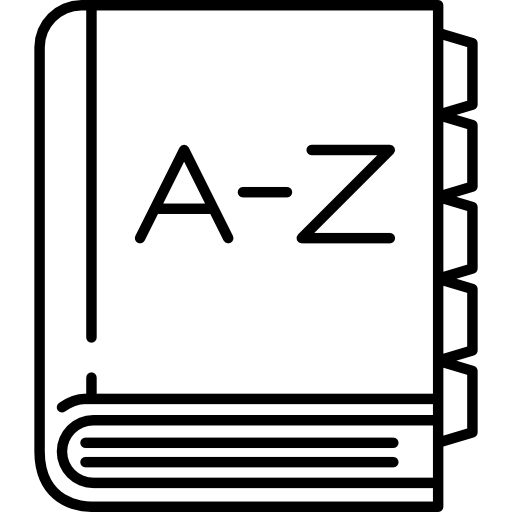SPECIFIC LEARNING DISABILITY
SPECIFIC LEARNING DISABILITY
Authorities: 20 United States Code (USC) §§ 1021, 7801; 34 Code of Federal Regulations (CFR) Part 300; Texas Education Code (TEC); 19 Texas Administrative Code (TAC) Chapters 74, 89
|
|
|---|
| FEDERAL AND STATE REQUIREMENTS | |
|---|---|
|
The group must comply with the EVALUATION PROCEDURES framework.
|
|
|
In Texas, the group of qualified professionals that determines whether the child is a child with a disability and the educational needs of the child is the child's ADMISSION, REVIEW, AND DISMISSAL COMMITTEE. |
|
|
EVALUATION PROCEDURES |
|
|
Specific learning disability (SLD) is a disorder in one or more of the basic psychological processes involved in understanding or in using language, spoken or written, that may manifest itself in the imperfect ability to listen, think, speak, read, write, spell, or to do mathematical calculations:
|
|
|
|
|
|
|
Dyslexia is an example of and meets the definition of a specific learning disability. Citations: |
|
|
Dyslexia means a disorder of constitutional origin manifested by a difficulty in learning to read, write, or spell, despite conventional instruction, adequate intelligence, and sociocultural opportunity. Citations: |
|
|
Related disorders include disorders similar to or related to dyslexia, such as developmental auditory imperceptions, dysphasia, specific developmental dyslexia, developmental dysgraphia, and developmental spell disability. Citations: |
|
|
The group of qualified professionals that collects or reviews evaluation data in connection with the determination of the child's eligibility based on an SLD must include:
|
|
|
|
|
|
|
|
|
|
|
|
|
Testing a student for dyslexia or a related disorder means a comprehensive evaluation as described in the EVALUATION PROCEDURES framework, and includes evaluation components as stated in the Dyslexia Handbook: Procedures Concerning Dyslexia and Related Disorders for the identification of dyslexia or a related disorder. Citations: |
|
|
If a local educational agency (LEA) suspects or has a reason to suspect that a child may have dyslexia, the multidisciplinary evaluation team must include at least one member with specific knowledge regarding the reading process, dyslexia and related disorders, and dyslexia instruction who: Citations: |
|
|
|
|
|
|
|
|
The member of the multidisciplinary evaluation team with specific knowledge regarding the reading process, dyslexia and related disorders, and dyslexia instruction must sign a document describing the member's participation in the evaluation of the child. Citations: |
|
|
Unless otherwise provided by law, including as required by the EVALUATION PROCEDURES framework, a student determined to have dyslexia during screening or testing or accommodated because of dyslexia may not be rescreened or retested for dyslexia for the purpose of reassessing the student's need for accommodations until the LEA reevaluates the information obtained from previous screening or testing of the student as required by the REVIEW OF EXISTING EVALUATION DATA framework. Citations: |
|
|
OBSERVATION
|
|
|
The LEA must ensure that the child is observed in the child's learning environment, including the general classroom setting, to document the child's academic performance and behavior in the areas of difficulty.
|
|
|
In determining whether the child has an SLD, the multidisciplinary team must decide to either:
|
|
|
|
|
Citations:
|
|
|
For the child less than school age or out of school, a member of the group of qualified professionals must observe the child in an environment appropriate for a child of that age.
|
|
|
The documentation of the determination of an SLD eligibility must contain a statement of:
|
|
|
|
|
DETERMINANT FACTORS
|
|
|
As part of the evaluation, and in order to ensure that underachievement by the child suspected of having an SLD is not due to lack of appropriate instruction in reading or math, the group of qualified professionals must consider:
|
|
|
|
|
|
|
|
|
|
|
PARTICIPATION IN THE RESPONSE TO INTERVENTION (RTI) PROCESS
|
|
|
If the child suspected of having an SLD participated in a process that assesses the child's response to evidence-based intervention, the documentation of the determination of eligibility must contain a statement of:
Citations:
|
|
|
|
|
|
|
ELIGIBILITY CRITERIA
|
|
|
|
|
|
|
|
|
|
|
|
|
|
|
|
|
|
|
When considering whether the child meets the Eligibility Criteria for an SLD, the presence of a significant variance among specific areas of cognitive function or between specific areas of cognitive function and academic achievement is not required when determining whether a child has a significant learning disability. Citations: |
|
|
RTI MODEL
|
|
|
When applying the RTI Model, a finding that the child meets the Eligibility Criteria for an SLD must include a determination that, when provided a process based on the child's response to evidence-based intervention, the child did not make sufficient progress to meet age or state-approved grade-level standards in one or more of these areas:
Citations:
|
|
|
|
|
|
|
|
|
PATTERN OF STRENGTHS AND WEAKNESSES
|
|
|
When applying the pattern of strengths and weaknesses model, to find that the child meets the Eligibility Criteria for an SLD, a determination must be made that:
|
|
|
|
|
|
|
EXCLUSIONARY FACTORS
|
|
|
The documentation of an SLD eligibility must contain a statement of the determination of the group of qualified professionals concerning the effects on the child's achievement level of:
|
|
|
The group of qualified professionals must determine that its findings are not primarily the result of:
|
|
|
|
|
DOCUMENTATION OF ELIGIBILITY
|
|
|
The documentation of the determination of eligibility must contain a statement of:
Citations:
|
|
|
|
|
Each member of the group of qualified professionals must certify in writing whether the report reflects the member's conclusion.
Citations:
|
|
|
If the report does not reflect a group member's conclusion, that group member must submit a separate statement presenting the member's conclusion.
Citations:
|
|
|
|
|
NOTIFICATIONS CONCERNING DYSLEXIA AND RELATED DISORDERS
|
|
|
If an LEA suspects or has a reason to suspect that a student may have dyslexia, including after an evaluation or use of a reading diagnosis, the LEA must: Citations: |
|
|
|
|
|
|
|
|
At least once each grading period, and more often if provided for in an individualized education program, an LEA must provide the parent or person standing in parental relation to a student receiving dyslexia instruction, with information regarding the student's progress as a result of the student receiving that instruction. Citations: |
 Home
Home Frameworks
Frameworks Publications
Publications Glossary
Glossary Updates
Updates Resources
Resources Documents
Documents H.B.
H.B. 